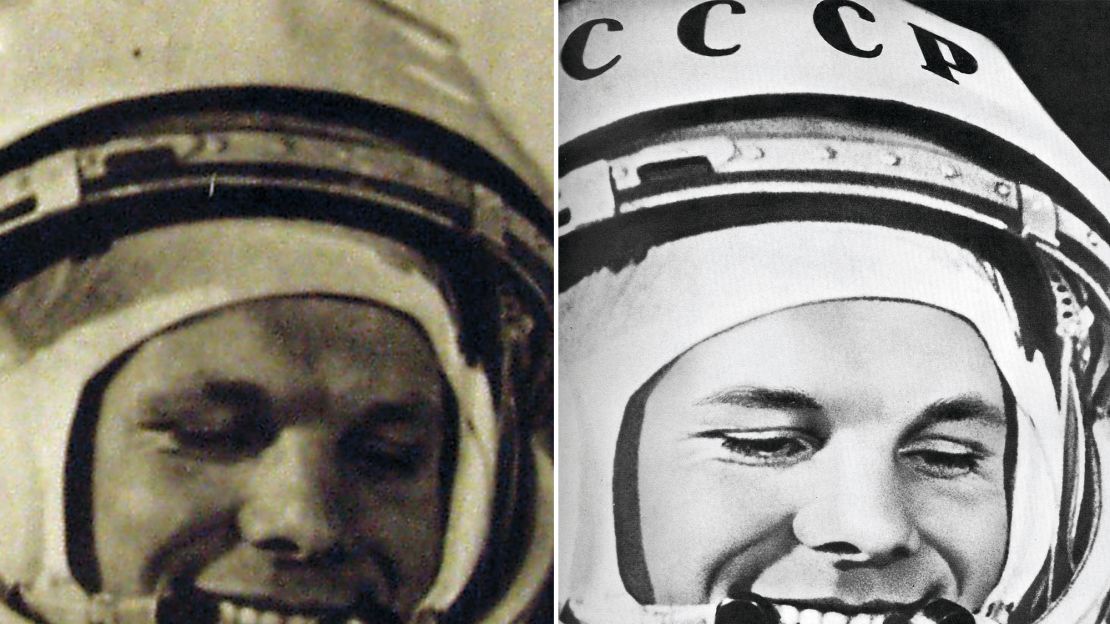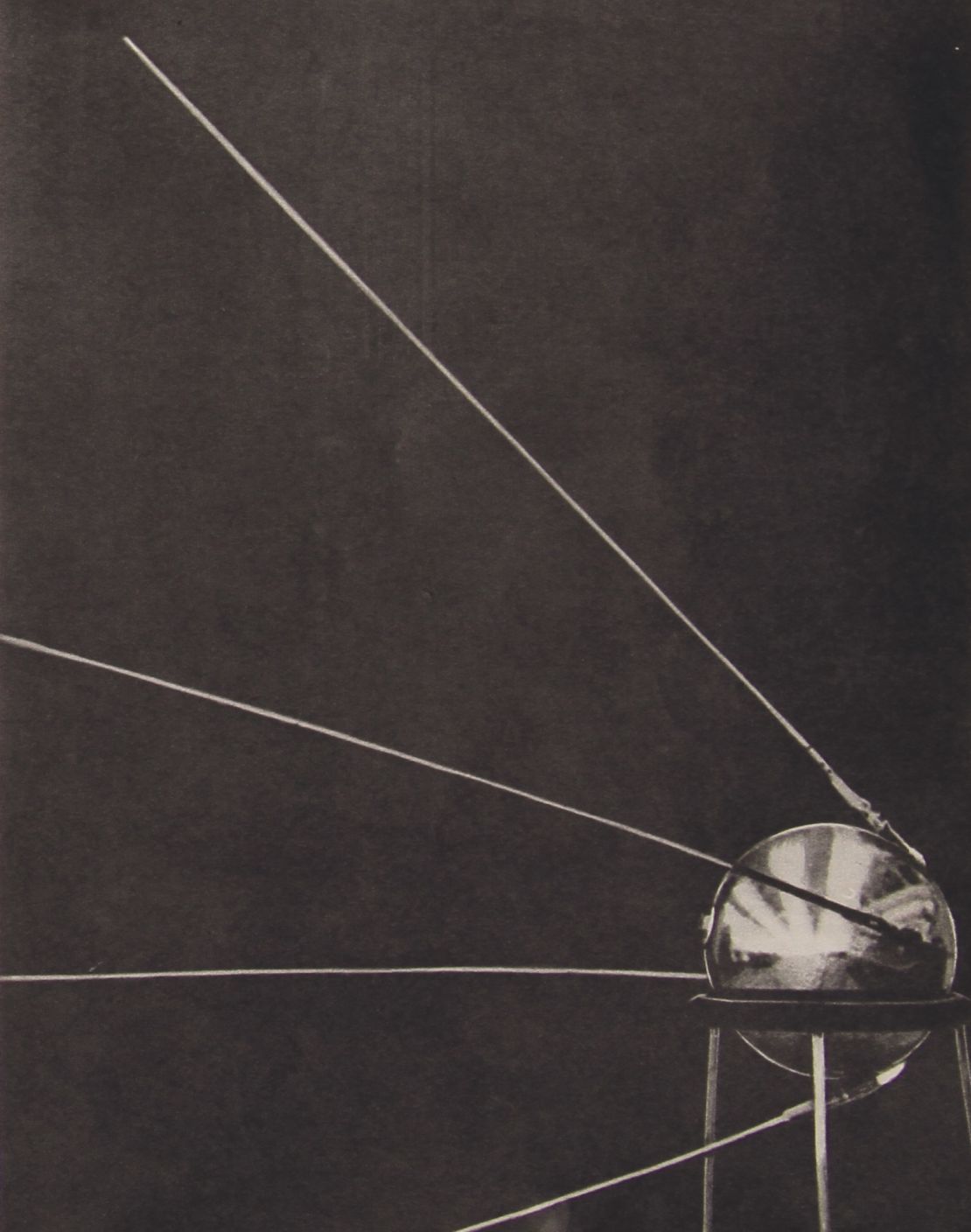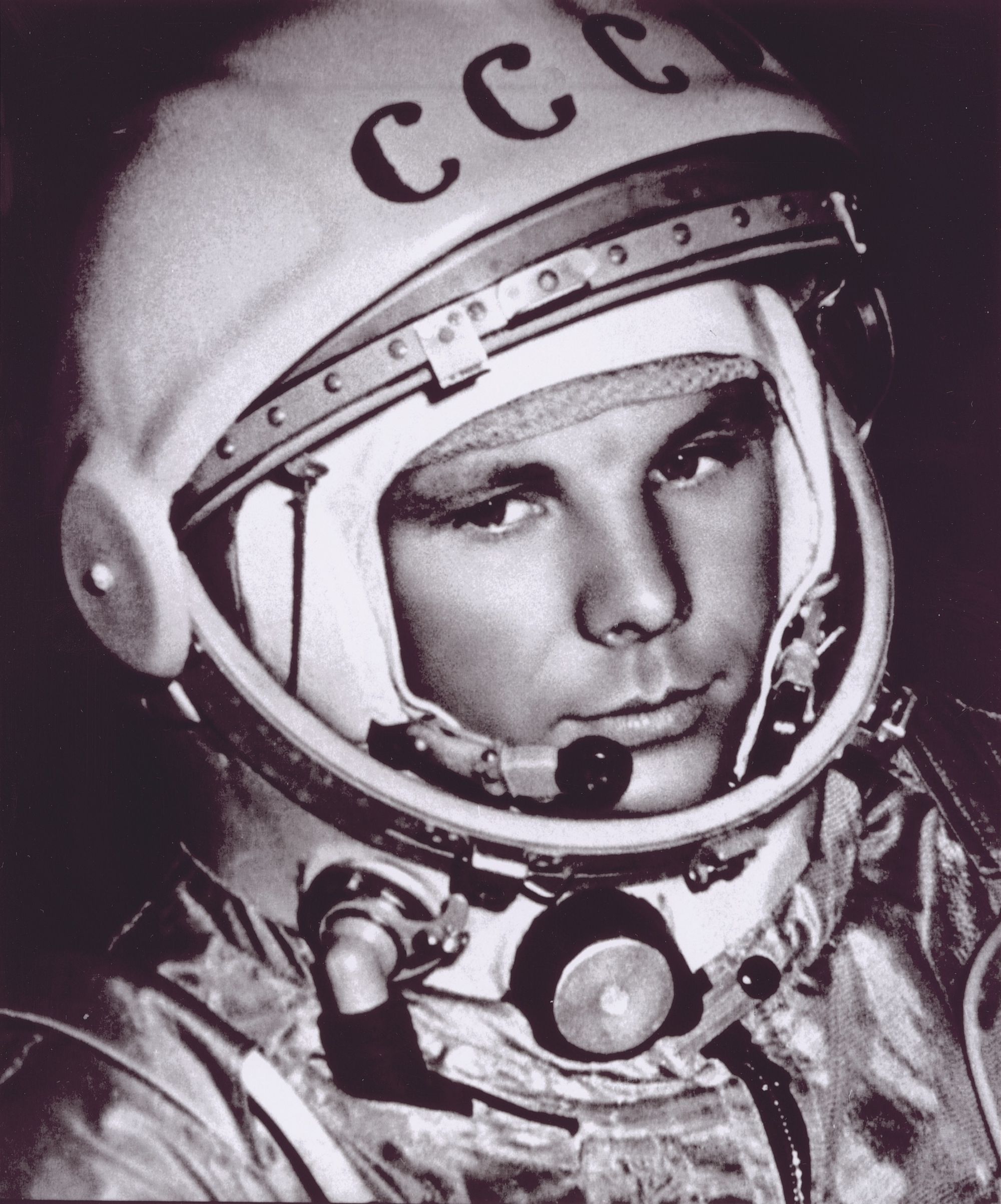In 1957, a small shiny sphere started the Space Age and ushered the world into the most heated decade of the Cold War.
The beautifully designed Sputnik-1 was the world’s first artificial satellite, setting the Soviet Union up for a streak of early victories in the conquest of the cosmos: the first man in space, the first lunar probe, the first woman in space, the first spacewalk.
As a symbol of modern life and the future, space was an ideal backdrop for the Communist propaganda machine, and every achievement carried a political message.
This revolution was not televised, but printed on the pages of magazines and newspapers: “The photographs tend to be overloaded with meaning and ideas, and that’s why they are so interesting,” said Iina Kohonen, author of “Picturing the Cosmos: A visual history of early Soviet space endeavor,” in a phone interview.
Picturing the cosmos
Why, for example, are cosmonauts almost always shown talking on the phone in the first photograph after returning from a mission?
“This was a way to somehow put the person that they were calling into the photograph. That person was the Secretary of the Communist Party, Nikita Khrushchev. In fact, this practice stopped after his time.”
Retouching
The state-run print network was censored and controlled. No negative or critical message would pass the filter, and publishing was illegal outside of official channels. This would only change well into the 1980s, when Mikhail Gorbachev promoted the idea of glasnost, a more open approach to public knowledge.
Kohonen took multiple trips to Moscow and was granted access to state archives, where she could compare published photographs with the uncensored originals. “Because of the censorship surrounding the space program, they were very careful about what to show, no technical details for example. The photographs I have studied are quite heavily manipulated, so it’s interesting to see the originals, which have now been released to see the differences,” she said.
But modifications were not always motivated by secrecy or political agenda. Sometimes a photograph was painted over – the Photoshop of the era – just to embellish it. One image of Yuri Gagarin, the first man in space and possibly the Soviet Union’s greatest hero, shows enhanced features, a whiter smile, and the letters CCCP (the Cyrillic equivalent of USSR) carefully painted over his helmet.

Repetition
Another trope of Soviet imagery is the constant repetition of the same photograph: most cosmonauts had one official picture that got printed over and over. “Because of the centralized press system, there were no copyright issues, so once they were happy with one image that had been approved by the state, they just kept using it,” said Kohonen.
The restricted flow of information due to extensive checks resulted in some surprising oversights. The initial news coverage of the Sputnik from the Soviet Union, for example, did not include a photograph. “It was nothing sensational, as if they didn’t quite realize that it was huge news, and it didn’t show the satellite. I realized there were very few photos of it, and one reason was the secrecy of the space program, which was overwhelming. Only after it made a splash in the Western press, they started circulating some photos of it,” she said.

The number of space-related images in Ogonyok, the most popular illustrated weekly magazine of the time, peaked in 1961 and 1962. Those were also the years of the Berlin crisis, which led to the construction of the wall, and the Cuban missile crisis, the closest the Cold War ever got to turning into nuclear warfare. The propaganda machine was in full swing, fueled by Gagarin’s historic first venture into space on April 12, 1961.
But in the following years, the decline in the number of space pictures closely follows the reversal of fortune in the Space Race, which was ultimately won by the United States on July 20, 1969, when the lunar module Eagle landed on the Moon.













